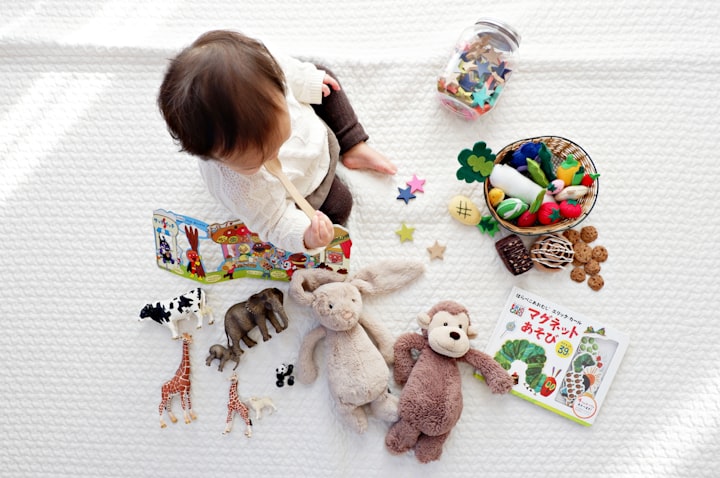The Ideal Toy for Children Under 3
How Do You Choose It?

Choosing the right toy for most adults is a real challenge. Most parents say that the hardest thing is to choose the right toys for children aged 0–3. And that's because this age is the most vulnerable, and the toy can become a big danger to the child's life and health.
In this article, we come up with concrete recommendations on how to choose the right toys for different stages of the child's age up to the age of 3.
Children under 6 months
At this stage, choose toys that will stimulate your senses, especially your eyesight, hearing, and touch. You should also keep in mind that at this age the child already can grasp things. So opt for colorful, textured, easy-to-hold, and noisy toys.
Suitable toys:
- musical carousels,
- lightweight rattles,
- brightly colored play mattresses,
- baby mirrors,
- denture toys,
- colored plastic figurines (rings, pyramids),
- plush toys or soft dolls (no buttons or small parts that the child could swallow).
6–12 months
During this time, it is important to focus on interactive games. This includes introducing the concept of cause and effect, as well as working on hand-eye coordination. Simple games like "catch the ball" are fun ways to help your baby discover the wonders of their new world.
Suitable toys:
- musical toys that produce sounds/words that the child would try to repeat
- handling toys: building cubes, shape or color sorting figurines, filling cups, rotating cylinders, etc.,
- forerunners,
- push toys,
- toy phones to encourage imitation communication,
- soft dolls and stuffed animals,
- light balls (for example, those made of textile materials).
12–18 months
After the age of one, the child begins to walk or experiment with the first steps. This is why toys at this age should arouse the curiosity to explore while developing fine motor coordination.
Suitable toys:
- sets of large cubes to build,
- pull or push toys,
- toys that can be sorted into shapes, colors, etc., with a higher degree of complexity,
- washable pencils or washable crayons,
- vehicles or toys to ride,
- picture books,
- electric cars,
- rocking horses.
18–24 months
From 1.5 to 2 years old, most children begin to use their imagination in games. The role of the parent is to propose toys that will challenge him to develop problem-solving strategies.
At this age, toys help him learn different shapes, colors, develop his ability to follow instructions, and communication skills.
Suitable toys:
- easy-to-handle puzzles with a small number of pieces,
- sets of swings to develop physical abilities,
- dolls and dollhouses,
- age-appropriate cubes and building sets,
- musical instruments - toys,
- train sets.
2–3 years
At this age, children intuitively begin to focus on fine motor coordination. Also, the little ones are starting to shape their personality and opt for more mute independence.
Most children, at 2–3 years old, are ready to start playing with other peers, so you can also opt for toys that can involve more children.
Suitable toys:
- tricycle,
- percussion musical instruments for beginners,
- simple board games for the development of eye-hand coordination as well as for the development of memory,
- cars/trucks,
- play kitchen,
- supplies for drawing, coloring, painting, and other handicrafts,
- puzzles,
- construction sets,
- toys that refer to various professions or social occupations.
Don't rush into buying lots of toys or stuffing your little one's room with lots of presents. The child will not know what to play with, will feel disoriented, and will end up not being attracted to anything. Keep only a few toys out of the reach of children.
If you have bought many toys and the child does not know what to choose to play with, you can rotate the toys. Unused ones should be kept in cabinets, chests, or other storage spaces and only show two or three toys at a time of 2–3 days. If your little one doesn't like a toy, hide it. The same toy has different uses, depending on the stage of development of the child. Maybe the baby will love her later.
So, when choosing a toy, take into account the age, physical features, and also the child's preferences. And in the next article, we will tell you how to choose toys that are safe for your child's life and health.





Comments
There are no comments for this story
Be the first to respond and start the conversation.